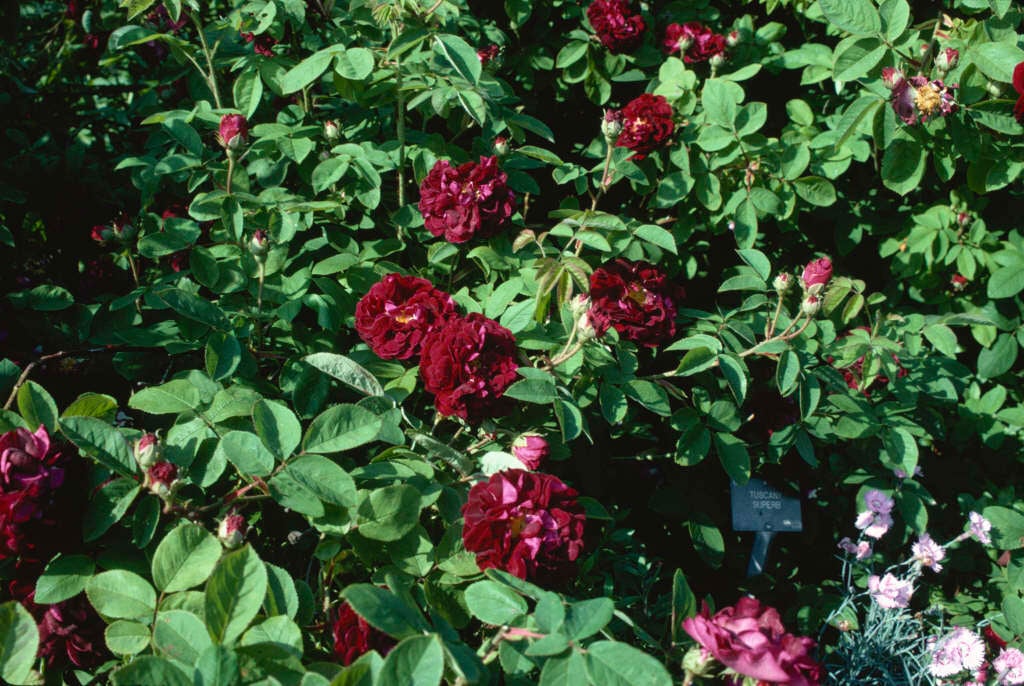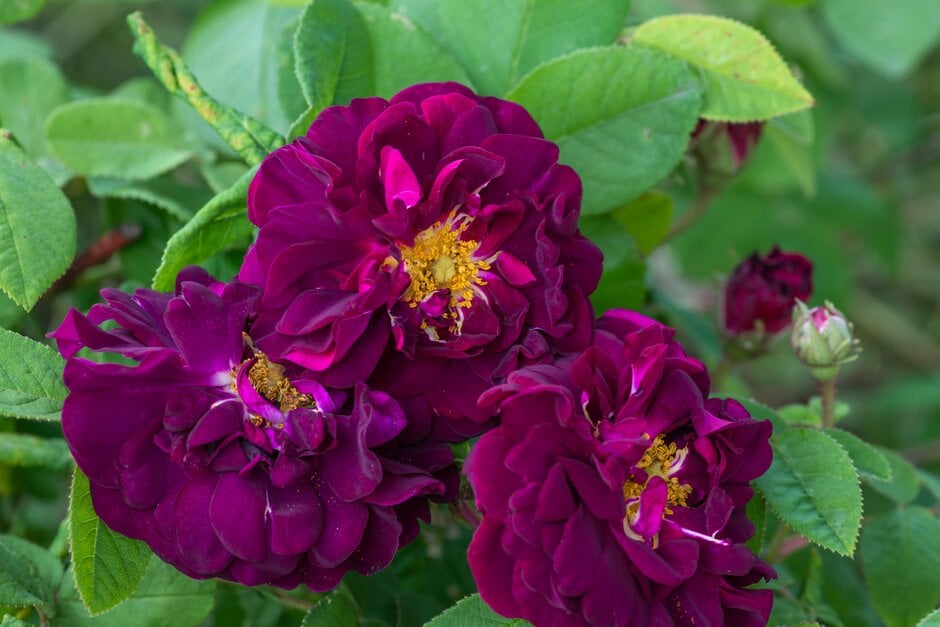Rosa 'Tuscany Superb' (G)
rose 'Tuscany Superb'
Vigorous, upright old garden rose about 1.2m tall, with almost thornless stems bearing plentiful, large, dark green foliage. Semi-double, very fragrant, velvety, dark crimson-purple blooms to 6cm across, displaying golden stamens when fully open, once-flowering in midsummer; W. Paul 1848
Size
Ultimate height
1–1.5 metresTime to ultimate height
2–5 yearsUltimate spread
0.5–1 metresGrowing conditions
Moisture
Moist but well–drained, Well–drainedpH
Acid, Alkaline, NeutralColour & scent
| Stem | Flower | Foliage | Fruit | |
| Spring | Green | |||
|---|---|---|---|---|
| Summer | Purple Red | Green | ||
| Autumn | Green | |||
| Winter |
Position
- Full sun
Aspect
East–facing or South–facing or West–facing
Exposure
Exposed or Sheltered Hardiness
H7Botanical details
- Family
- Rosaceae
- Native to GB / Ireland
- No
- Foliage
- Deciduous
- Habit
- Bushy
- Potentially harmful
- Fruit are ornamental - not to be eaten. Wear gloves and other protective equipment when handling. Pets: Fruit are ornamental - not to be eaten - see the HTA guide to potentially harmful plants for further information and useful contact numbers
- Genus
Rosa can be deciduous or semi-evergreen shrubs or scrambling climbers, with usually thorny stems bearing compound pinnate leaves and solitary or clustered flowers. Flowers may be followed by showy red or purple fruits in some varieties.
- Name status
Accepted
- Horticultural Group
- Gallica roses are compact, prickly shrubs with dull green foliage and generally fragrant, single to double flowers in small clusters in mid-summer
How to grow
Cultivation
Grow in full sun with fertile, humus-rich, moist but well-drained soil. For best flowering apply a balanced fertiliser and mulch in late winter or early spring - see rose cultivation. Tolerant of poor soil, suitable for hedging and good for cut flowers
Propagation
Propagate by softwood cuttings in early to mid spring, hardwood cuttings in late summer to autumn or by chip budding in summer
Suggested planting locations and garden types
- Cottage and informal garden
- City and courtyard gardens
- Cut flowers
- Hedging and screens
- Flower borders and beds
Pruning
See pruning group 20 (shrub roses)
Pests
May be susceptible to aphids, rose leafhopper, glasshouse red spider mite, scale insects, caterpillars, large rose sawfly, rose slugworm sawfly and rose leaf-rolling sawfly. Deer and rabbits can cause damage
Diseases
May be susceptible to rose black spot, rose rust, replant disease, rose dieback, and rose powdery mildew and sometimes honey fungus. May also be susceptible to disorders rose blindness and flower balling
Get involved
The Royal Horticultural Society is the UK’s leading gardening charity. We aim to enrich everyone’s life through plants, and make the UK a greener and more beautiful place.

